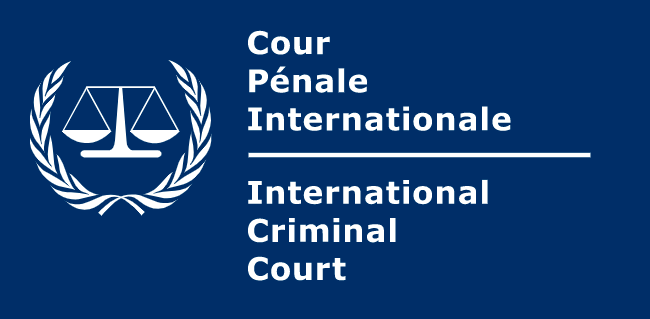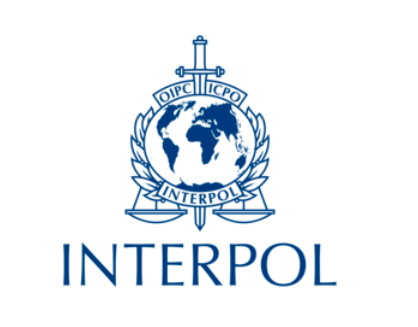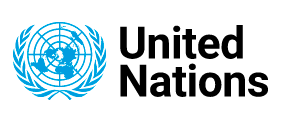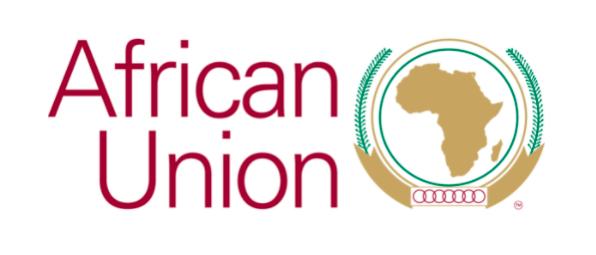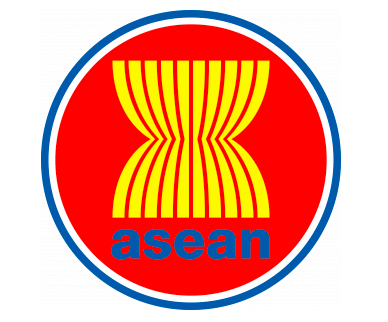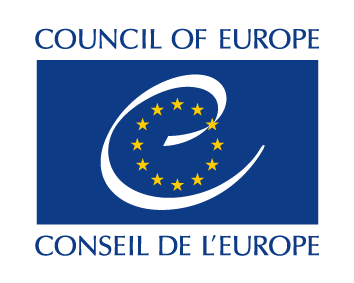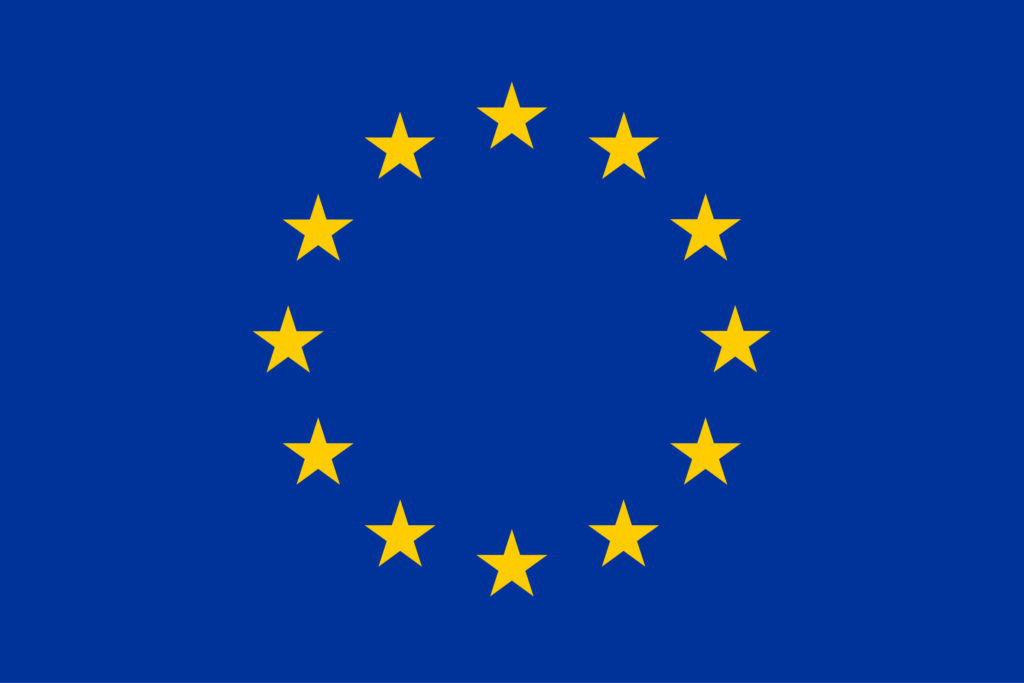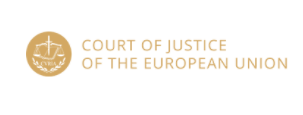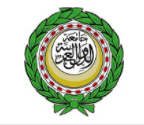In this article, you will find most international and regional bodies/organizations working in the field of international law, human rights, humanitarian law and international criminal law, a short description of their work and links to their website!
You can always let me know through the contact form if you have any questions or if I missed something!
*click on the organization’s name to be redirected to its website.
Cet article est également disponible en français à l’adresse suivante : www.aftranslationservices.com/institutions
International bodies
Supra-national bodies that can have general objectives (such as the UN) or specific ones (such as the International Criminal Court) but they aim to implement these at the global level and to have a global impact.
Based in: The Hague (Netherlands).
Establishment: It was established in June 1945 by the Charter of the United Nations and began work in April 1946. The International Court of Justice (ICJ) is the principal judicial organ of the United Nations (UN).
Mission: The Court’s role is to settle, in accordance with international law, legal disputes submitted to it by States and to give advisory opinions on legal questions referred to it by authorized United Nations organs and specialized agencies.
Composition: The Court is composed of 15 judges, who are elected for terms of office of nine years by the United Nations General Assembly and the Security Council. It is assisted by a Registry, its administrative organ. Its official languages are English and French.
Located in: The Hague (Netherlands).
Establishment: At the 1998 United Nations Diplomatic Conference of Plenipotentiaries on the Establishment of an International Criminal Court. Its establishment has been codified into the Rome Statute which entered into force in 2002.
Mission: The Court is participating in a global fight to end impunity, and through international criminal justice, the Court aims to hold those responsible accountable for their crimes and to help prevent these crimes from happening again.
The Court cannot reach these goals alone. As a court of last resort, it seeks to complement, not replace, national Courts. Governed by an international treaty called the Rome Statute, the ICC is the world’s first permanent international criminal court.
The International Criminal Court (ICC) investigates and, where warranted, tries individuals charged with the gravest crimes of concern to the international community: genocide, war crimes, crimes against humanity and the crime of aggression. (click here to learn more about such crimes).
Composition: 18 judges.
Based in: Lyon (France).
Establishment: The International Criminal Police Commission was created in 1923, and became the International Criminal Police Organization-INTERPOL in 1956.
Mission: We have 195 member countries, and we help police in all of them to work together to make the world a safer place. To do this, we enable them to share and access data on crimes and criminals, and we offer a range of technical and operational support.
The General Secretariat provides a range of expertise and services to our member countries. This expertise supports national efforts in combating crimes across three global areas we consider the most pressing today; terrorism, cybercrime and organized crime.
Composition: INTERPOL has 195 member countries, making us the world’s largest police organization. They work together and with the General Secretariat to share data related to police investigations.
Each country hosts an INTERPOL National Central Bureau (NCB), which links national police with our global network.
Countries come together at the annual General Assembly to decide policy, working methods, finances and activities. In addition, heads of NCB meet annually at a conference to share experiences.
Based in: New-York (USA); European headquarter in Geneva (Switzerland).
Establishment: In 1945 at the United Nations Conference on International Organization in San Francisco (USA).
Mission: It is a place where all the world’s nations can gather together, discuss common problems, and find shared solutions that benefit all of humanity.
Composition: Currently made up of 193 Member States, the UN and its work are guided by the purposes and principles contained in its founding Charter.
The UN is part of a wider “UN system” made of many institutions, funds, specialized agencies… You can find a list here.
One important entity, with regard to human rights, is the Office of the High Commissioner for Human Rights (OHCHR).
Based in: Geneva (Switzerland).
Establishment: The UN General Assembly established The Office of the High Commissioner for Human Rights in December 1993 through its resolution 48/141 which also details its mandate.
Mission:
- Promote and protect all human rights
- Help empower people
- Assist Governments
- Inject a human rights perspective into all UN programmes
Composition:
Charter-based bodies
- Human Rights Council
- Universal Periodic Review
- Commission on Human Rights (replaced by the Human Rights Council)
- Special Procedures of the Human Rights Council
- Human Rights Council Complaint Procedure
Treaty-based bodies
There are ten human rights treaty bodies that monitor implementation of the core international human rights treaties:
- Committee on the Elimination of Racial Discrimination (CERD)
- Committee on Economic, Social and Cultural Rights (CESCR)
- Human Rights Committee (CCPR)
- Committee on the Elimination of Discrimination against Women (CEDAW)
- Committee against Torture (CAT)
- Committee on the Rights of the Child (CRC)
- Committee on Migrant Workers (CMW)
- Subcommittee on Prevention of Torture (SPT)
- Committee on the Rights of Persons with Disabilities (CRPD)
- Committee on Enforced Disappearances (CED)
Regional bodies
Regional bodies can have global of specific goals, and are supra-national, just as international bodies have, but their application will be geographically limited (for example, only countries located in Europe can join the European Union).
African level
Based in: Addis Ababa (Ethiopia)
Establishment: It was officially launched in 2002 as a successor to the Organisation of African Unity (OAU, 1963-1999).
The Constitutive Act of the African Union and the Protocol on Amendments to the Constitutive Act of the African Union lay out the aims of the AU which are, inter alia:
- Achieve greater unity and solidarity between African countries and theiro people
- Promote peace, security, and stability on the continent;
- Promote democratic principles and institutions, popular participation and good governance;
- Promote and protect human and peoples’ rights in accordance with the African Charter on Human and Peoples’ Rights and other relevant human rights instruments;
- Promote sustainable development at the economic, social and cultural levels as well as the integration of African economies;
- Promote cooperation in all fields of human activity to raise the living standards of African peoples;
- Ensure the effective participation of women in decision-making, particularly in the political, economic and socio-cultural areas;
- Develop and promote common policies on trade, defence and foreign relations to ensure the defence of the Continent and the strengthening of its negotiating positions;
- Invite and encourage the full participation of the African Diaspora as an important part of our Continent, in the building of the African Union.
Composition: The African Union (AU) is a continental body consisting of the 55 member states that make up the countries of the African Continent.
The work of the AU is implemented through several principal decision making organs: The Assembly of Heads of State and Government, the Executive Council, the Permanent Representatives Committee (PRC), Specialised Technical Committees (STCs), the Peace and Security Council and The African Union Commission.
Organs that handle judicial and legal matters as well as human rights issues include: African Commission on Human and Peoples’ Rights (ACHPR), African Court on Human and Peoples’ Rights (AfCHPR), AU Commission on International Law (AUCIL), AU Advisory Board on Corruption (AUABC) and the African Committee of Experts on the Rights and Welfare of the Child. The AU is also working towards the establishment of continental financial institutions (The African Central Bank, The African Investment Bank and the African Monetary Fund)
The Regional Economic Communities (RECs) and the African Peer Review Mechanism are also key bodies that that constitute the structure of the African Union.
American level
Based in: Washington D.C. (USA).
Establishment: The OAS came into being in 1948 with the signing in Bogotá, Colombia, of the Charter of the OAS, which entered into force in December 1951.
Mission: The Organization was established in order to achieve among its member states—as stipulated in Article 1 of the Charter—”an order of peace and justice, to promote their solidarity, to strengthen their collaboration, and to defend their sovereignty, their territorial integrity, and their independence.”
Composition: Today, the OAS brings together all 35 independent states of the Americas and constitutes the main political, juridical, and social governmental forum in the Hemisphere. In addition, it has granted permanent observer status to 69 states, as well as to the European Union (EU).
The OAS has created the Inter-American Court and Commission on Human Rights.
Based in: Washington D.C. (USA).
Establishment: Created by the OAS in 1959.
Mission: The IACHR is a principal and autonomous organ of the Organization of American States (“OAS”) whose mission is to promote and protect human rights in the American hemisphere.
The Charter establishes the Inter-American Commission on Human Rights (IACHR) as one of the principal organs of the OAS whose function is to promote the observance and protection of human rights and to serve as a consultative organ of the Organization in these matters.
The work of the IACHR rests on three main pillars:
- the individual petition system;
- monitoring of the human rights situation in the Member States, and
- the attention devoted to priority thematic areas.
Composition: The Commission shall be composed of seven members, who shall be persons of high moral character and recognized competence in the field of human rights, elected in a personal capacity by the OAS General Assembly from a list of candidates proposed by the governments of the Member States.
Based in: San José (Costa Rica).
Establishment: In the 1948 OAS charter; it entered into force in 1979.
Mission: The Inter-American Court exercises a contentious function, in which it resolves contentious cases and supervises judgments; an advisory function; and a function wherein it can order provisional measures. It is an autonomous legal institution whose objective is to interpret and apply the American Convention.
Composition: The Court is composed of seven Judges, nationals of the member States of the OAS. They serve in their personal capacity and are elected by the General Assembly and are appointed for a 4-year period, renewable once.
Asian level
Based in: Jakarta (Indonesia).
Establishment: 8 August 1967 in Bangkok, Thailand, with the signing of the ASEAN Declaration (Bangkok Declaration).
Mission: As set out in the ASEAN Declaration, the aims and purposes of ASEAN are:
- accelerate the economic growth, social progress and cultural development in the region through joint endeavours in the spirit of equality and partnership in order to strengthen the foundation for a prosperous and peaceful community of Southeast Asian Nations;
- promote regional peace and stability through abiding respect for justice and the rule of law in the relationship among countries of the region and adherence to the principles of the United Nations Charter;
- promote active collaboration and mutual assistance on matters of common interest in the economic, social, cultural, technical, scientific and administrative fields;
- provide assistance to each other in the form of training and research facilities in the educational, professional, technical and administrative spheres;
- collaborate more effectively to encourage further growth in the agriculture and industry, and trade sectors. This includes improving transportation and communications facilities and conducting studies on international commodity trade with the overarching goal of raising the living standards of ASEAN peoples;
- promote Southeast Asian studies; and
- maintain close and beneficial cooperation with existing international and regional organisations with similar aims and purposes, and explore all avenues for even closer cooperation among themselves.
Composition: The Founding Fathers of ASEAN, namely Indonesia, Malaysia, Philippines, Singapore and Thailand. Brunei Darussalam then joined on 7 January 1984, Viet Nam on 28 July 1995, Lao PDR and Myanmar on 23 July 1997, and Cambodia on 30 April 1999, making up what is today the ten Member States of ASEAN.
European level
There are two main organisation in Europe, each with its own Court, and they are often mixed up. This is the European Council and the European Union, while they actually differ in terms of objectives and members. A quick difference before developing more each institution:
- The European Union (EU) is a mostly economic cooperation;
- The Council of Europe (CoE) is mostly active in the areas of human rights and in strengthening democracy.
See the CoE’s page “Do not get confused”: https://www.coe.int/en/web/about-us/do-not-get-confused
Based in: Strasbourg (France).
Establishment: Signing of the Treaty creating the CoE in 1949.
Mission: This is a cooperation organisation.
Composition: The aim of the CoE is to integrate all European States. It has currently 47 member States out of 51 European States.
To integrate the CoE, the State must be a European State and share the same values regarding the rule of law, democracy and human rights.
Organs of the CoE:
- Committee of Ministers: This is the Council’s decision-making body and is made up of the ministers of foreign affairs of each member state or their permanent diplomatic representatives in Strasbourg. The Committee of Ministers decides Council of Europe policy and approves its budget and programme of activities.
- Parliamentary Assembly (PACE): The Parliamentary Assembly consists of 324 members of parliament from the 47 member states; the Assembly elects the Secretary General, the Human Rights Commissioner and the judges to the European Court of Human Rights; it provides a democratic forum for debate and monitors elections; its committees play an important role in examining current issues
- Congress of Local and Regional Authorities: The Congress of Local and Regional Authorities is responsible for strengthening local and regional democracy in its 47 member states. Composed of two chambers – the Chamber of Local Authorities and the Chamber of Regions – and three committees, it brings together 648 elected officials representing more than 150 000 local and regional authorities.
- Commissioner for Human Rights: The Human Rights Commissioner independently addresses and brings attention to human rights violations.
- The Secretariat.
The CoE created the European Court of Human Rights.
*Briefs and information on the Court available at: https://www.echr.coe.int/Pages/home.aspx?p=court/doc_info&c=
Based in: Strasbourg (France).
Establishment: 1959 by the Council of Europe.
Mission: It is the only truly judicial organ established by the European Convention on Human Rights and ensures, in the last instance, that contracting states observe their obligations under the Convention.
It rules on individual or State applications alleging violations of the civil and political rights set out in the European Convention on Human Rights.
Composition: It is composed of one Judge for each State party to the Convention (currently 47).
Based in: The EU institutions are based in several European cities as follows:
- Brussels (Belgium): The European Parliament; the European Council/Council of the EU; the European Commission; the European External Action Service; the European Economic and Social Committee; the European Committee of the Regions; the European Data Protection Supervisor.
- Strasbourg (France): The European Parliament.
- Luxembourg (Luxembourg): The European Parliament; the Court of Justice of the European Union; the European Court of Auditors; the European Investment Bank.
- Frankfurt (Germany): The European Central Bank.
Establishment: The European Union is a long-term construction based on the evolution of the European Economic Community, among others. We speak of “European Union” since the Treaty of Maastricht (1992).
[ A few milestones in the EU construction:
1951 Paris Treaty: Creation of the European Coal and Steel Community.
1957 Treaty of Rome: European Defense Community and European Atomic Energy Community (EurAtom).
1986 Single Act (revision of the Rome Treaty): Introduction of a political cooperation area.
1992 Maastricht Treaty: We now speak of European Union. The EU does not replace the above-mentioned Communities but integrate them as pillars: The community pillar is made up of the 3 communities, it is a supranational pillar characterized by the logic of integration; the CFSP – common foreign and security policy; JHA – justice and home affairs.
1997 Amsterdam Treaty: It expands the scope of the first pillar as well as the powers of the Court.
2000 Treaty of Nice: It strengthens the decision-making role of the Parliament.
2007 Treaty of Lisbon: It modernizes the institutions -the European Council and the European Central Bank become components of the EU; the Court of Justice of the European Communities becomes the Court of Justice of the European Union; refers to an EU Charter of Fundamental Rights; officially consecrates the legal personality of the EU; disappearance of the pillared structure. ]
Mission: It is an integration organisation.
Composition: The EU is currently made of 27 Member states.
To join the EU, the State must be a European country, have stable institutions guaranteeing democracy, the rule of law, human rights and respect for and protection of minorities; a functioning market economy and the capacity to cope with competition and market forces in the EU; the ability to take on and implement effectively the obligations of membership, including adherence to the aims of political, economic and monetary union.
EU organs: The EU is both a supranational and international organisation, as shows its organs composition:
- The European Parliament: Elected, it has three functions: legislative, budgetary and oversight.
- The European Council: Composed of Member states’ representatives, it has three functions, political, judicial (through arbitration), and legal (through nominations). The European Council is the EU institution that defines the general political direction and priorities of the European Union. Not to be confused with the Council of Europe!
- The Council or Council of the European Union: Composed of Member states’ representatives, it negotiates and adopts EU laws; coordinates member states’ policies; develops the EU’s common foreign and security policy; concludes international agreements; and adopts the EU budget.
- The European Commission: Created by the Rome Treaty, it is composed by commissioners. It has an initiative power in decision-making procedures, an executive power and a monitoring power.
- The Court of Justice of the EU (read more below): Monitors the application of the EU law.
*A booklet of information is available https://curia.europa.eu/jcms/upload/docs/application/pdf/2020-05/cour_garante_qd-03-20-178-en-n.pdf
Based in: Luxembourg (Luxembourg).
Establishment: 1952.
Mission: To ensure that “the law is observed” “in the interpretation and application” of the Treaties.
As part of that mission, the Court of Justice of the European Union:
- reviews the legality of the acts of the institutions of the European Union,
- ensures that the Member States comply with obligations under the Treaties, and
- interprets European Union law at the request of the national courts and tribunals.
Note: The Court of Justice of the European Union consists of two courts: the Court of Justice and the General Court (created in 1988). The Civil Service Tribunal, established in 2004, ceased to operate on 1 September 2016 after its jurisdiction was transferred to the General Court in the context of the reform of the European Union’s judicial structure.
Composition: One judge for each member state (currently 27 judges) two of which are elected as president and vice president, and 11 advocate general.
Middle East and North Africa (MENA)
Based in: Cairo (Egypt).
Establishment: 2 March 1945. On the same day, the Charter of the Arab States has been adopted.
Mission: Cooperation between the Arab states and the development.
Composition: 22 Member states, Egypt, Iraq, Saudi Arabia, Syria, Lebanon, Jordan, Yemen, Morocco, Tunisia, Algeria, Mauritania, Libya, Sudan, Somalia, Djibouti, the Comoros, Oman, United Arab Emirates, Bahrain, Kuwait, Qatar, Palestine.


